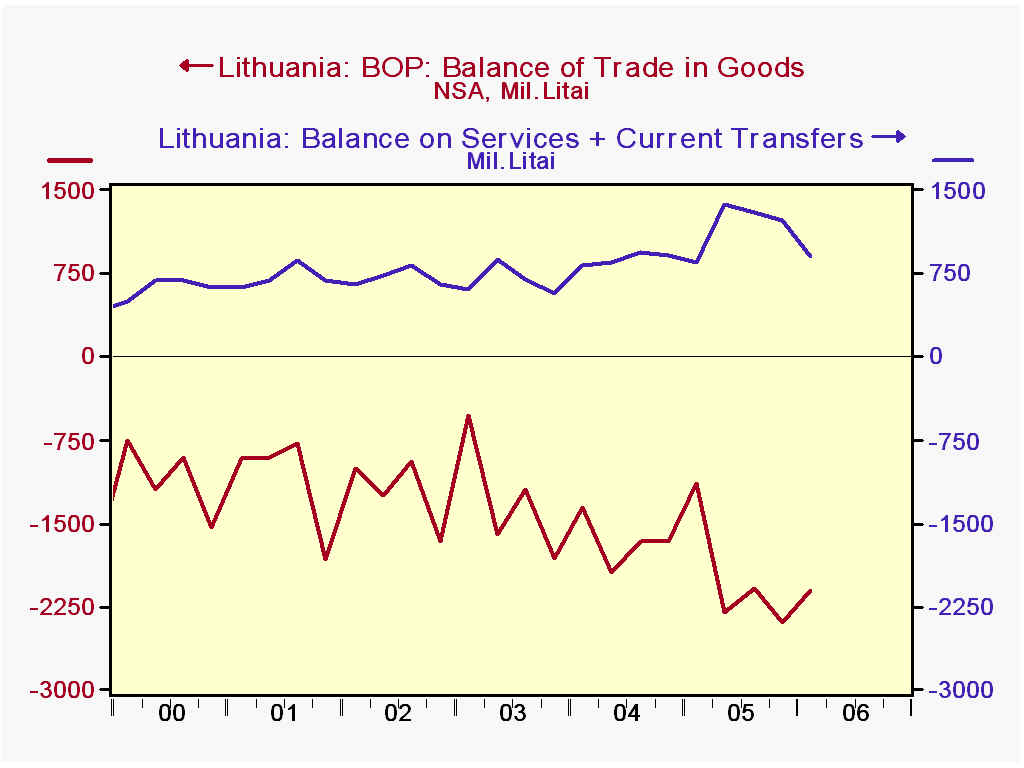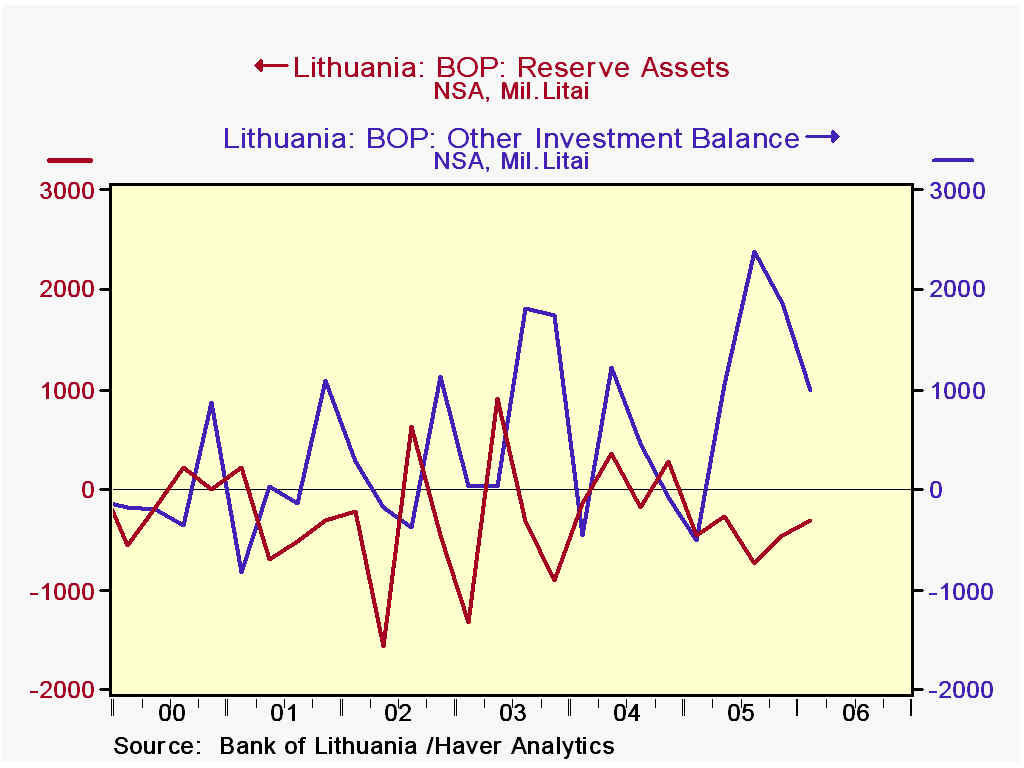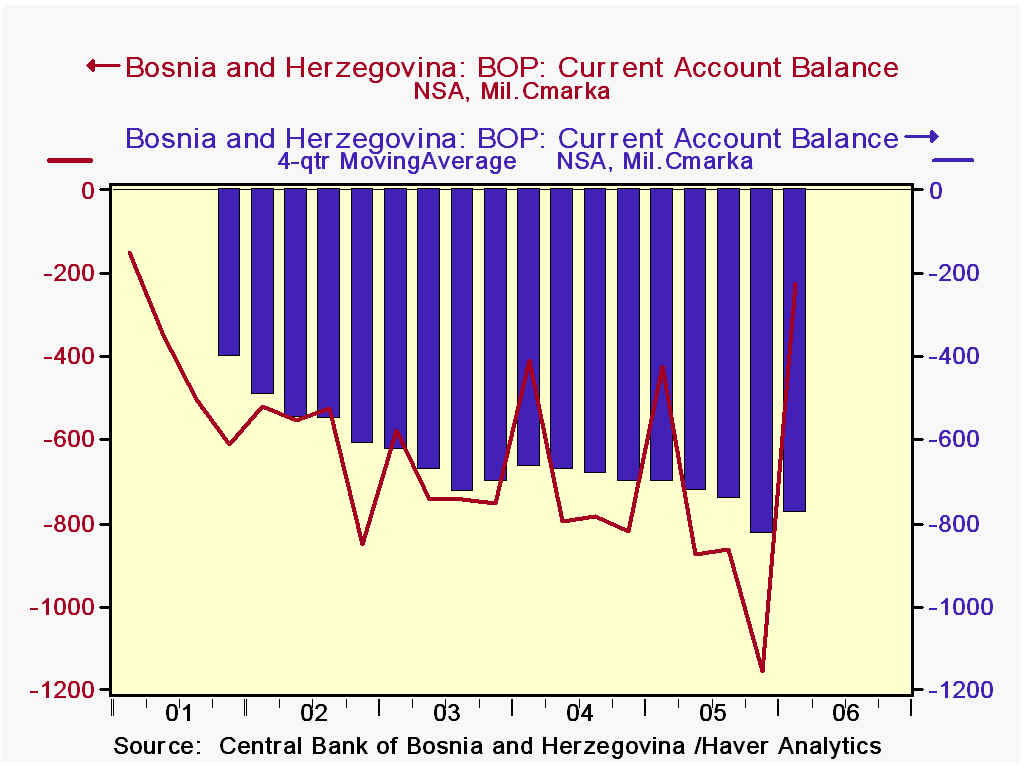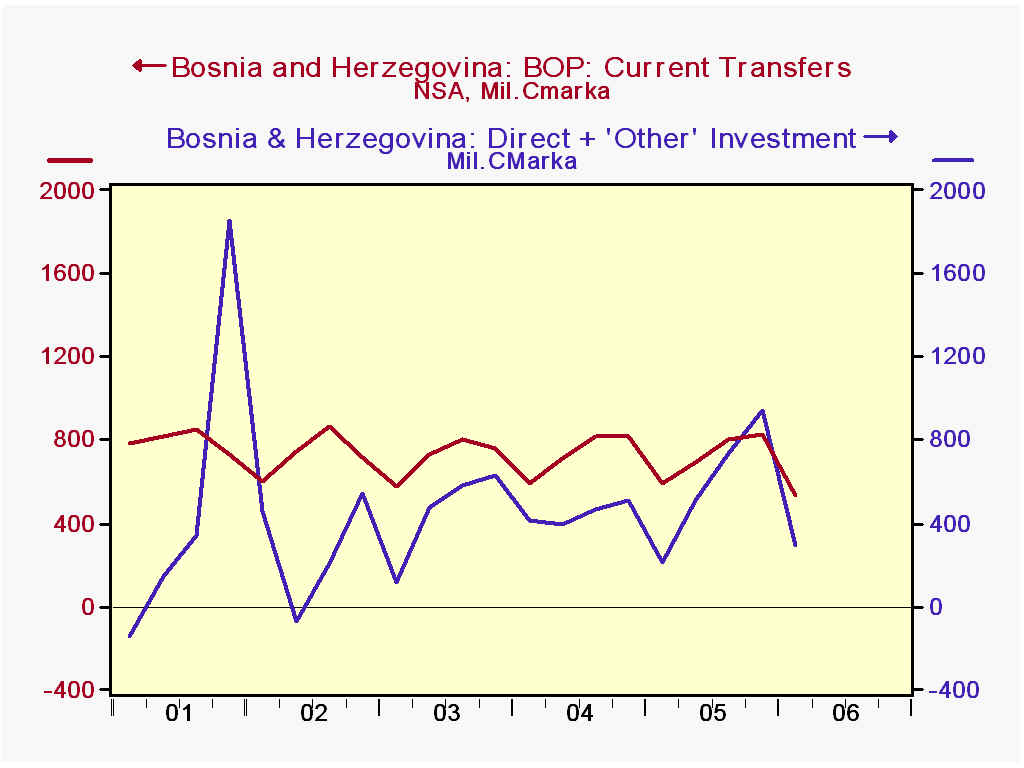 Global| Jun 28 2006
Global| Jun 28 2006Wider Current Account Deficit in Lithuania; Slight Improvement in Bosnia & Herzegovina
Summary
Balance of payments reports for two emerging European economies show a mixed picture for Q1 2006. In Lithuania, the current account has widened markedly over the last year, in rough parallel with gaping trade accounts. By contrast, [...]

Balance of payments reports for two emerging European economies show a mixed picture for Q1 2006. In Lithuania, the current account has widened markedly over the last year, in rough parallel with gaping trade accounts. By contrast, Bosnia and Herzegovina are seeing a steadier trend in both current account and trade balances, although these not-seasonally adjusted figures are fairly erratic from quarter to quarter.
In Lithuania, imports surged in the spring of last year and continued rising through the summer. Until 2003, the usual seasonal pattern saw them ease in the summer quarter after their spring bounce. We presume the latest move is energy related. Fortunately, exports have been stronger in the last year than has been typical, but still not so vigorous as imports. Also fortunate have been larger surpluses on services and transfer receipts which have helped offset the larger trade deficit. On the financial accounts side of the balance of payments ledger, "other investment", generally bank loans, has increased and even Lithuania's capital account has shown a persistent and non-trivial surplus. However, some financing has also come from a decrease in foreign exchange reserves, not likely a comfortable position for the central bank.
In Bosnia, the rise in imports has been much more temperate. Indeed, in Q1, imports were actually very slightly smaller than in Q1 2005. Combined with a firm uptrend in exports, the goods balance has deteriorated only modestly, rather than losing major ground as in some other countries. Financing for the goods deficit has come from a sustained inflow of current transfers (see graph) and from inflows of direct investment and "other" investment. Interestingly, Bosnia & Herzegovina has virtually no portfolio investment. There has been a moderate run-off of foreign exchange reserves.
Both of these countries peg their currencies to the euro. Lithuania is a member of the EU-25, the segment added in 2004 that retain their own local currency, here the litas, which is 3.4528 to the euro. Bosnia has linked its currency, the Convertible Marka, to the euro since the inception of the euro in 1999. Monthly data for it are maintained by the Central Bank of Bosnia & Herzegovina from 2002. All of these data are contained in Haver's EMERGECW database and some data for Lithuania are also in EUROSTAT.
| Q1 2006 | Q4 2005 | Q1 2005 | Quarterly Averages||||
|---|---|---|---|---|---|---|
| 2005 | 2004 | 2003 | ||||
| Lithuania: Mil Litai, SA | ||||||
| Current Account | -2035.7 | -1308.4 | -1013.1 | -1234.5 | -1202.5 | -963.9 |
| Trade Balance | -2529.1 | -2202.6 | -1569.0 | -1982.0 | -1657.7 | -1285.2 |
| Financial Account Balance | 1650.5 | 907.9 | 340.1 | 931.4 | 878.1 | 789.6 |
| Bosnia: Mil. Convertible Marka, NSA | ||||||
| Current Account | -221.5 | -1154.4 | -424.3 | -829.0 | -702.5 | -705.9 |
| Trade Balance | -1089.4 | -2387.2 | -1400.1 | -1958.3 | -1798.2 | -1795.0 |
| Financial Account Balance | 44.8 | 688.8 | 234.1 | 412.8 | 276.1 | 371.5 |
Carol Stone, CBE
AuthorMore in Author Profile »Carol Stone, CBE came to Haver Analytics in 2003 following more than 35 years as a financial market economist at major Wall Street financial institutions, most especially Merrill Lynch and Nomura Securities. She had broad experience in analysis and forecasting of flow-of-funds accounts, the federal budget and Federal Reserve operations. At Nomura Securities, among other duties, she developed various indicator forecasting tools and edited a daily global publication produced in London and New York for readers in Tokyo. At Haver Analytics, Carol was a member of the Research Department, aiding database managers with research and documentation efforts, as well as posting commentary on select economic reports. In addition, she conducted Ways-of-the-World, a blog on economic issues for an Episcopal-Church-affiliated website, The Geranium Farm. During her career, Carol served as an officer of the Money Marketeers and the Downtown Economists Club. She had a PhD from NYU's Stern School of Business. She lived in Brooklyn, New York, and had a weekend home on Long Island.





